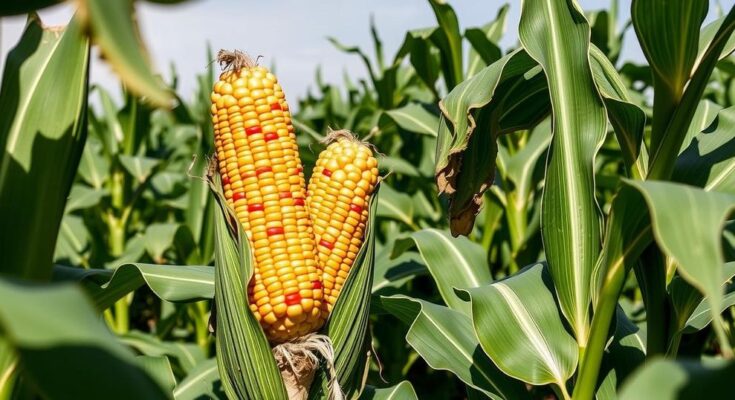The Buenos Aires Grains Exchange has increased its 2024/25 corn planting estimate to 6.6 million hectares while decreasing soybean planting to 18.4 million hectares due to declining prices. Farmers are diversifying their crop allocations amid these changes, with substantial sowing already completed for both crops. Harvesting of wheat is also well underway, with projections indicating a total yield of 18.6 million metric tons.
On Friday, the Buenos Aires Grains Exchange announced an increase in its estimated corn planting area for the 2024/25 season to 6.6 million hectares, up from the previously projected 6.3 million hectares. This adjustment was described as a “correction” to the earlier estimate. Conversely, the area designated for soybean planting has been reduced to 18.4 million hectares, reflecting a decline of 200,000 hectares. The decrease in soybean planting correlates with falling soybean prices, prompting farmers to explore alternative crops. As of the report, Argentine farmers had completed sowing 84.6% of the soybean allotment and 80.9% of the corn fields. Additionally, the exchange reported that approximately 88.5% of wheat fields have been harvested, with the total wheat production anticipated at 18.6 million metric tons.
Argentina stands as a significant player in the global agricultural market, known for its corn and soybean production. Corn and soybeans are pivotal crops for Argentine farmers, often competing for land use. The shifts in planting estimates stem from the interplay of market prices and farmers’ planting decisions. As global markets fluctuate, particularly regarding soybean prices, farmers are adapting by reallocating acreage from soy to corn or other crops, which impacts overall agricultural output in the region. Wheat also plays a crucial role in Argentina’s agricultural framework, contributing to the diverse crop portfolio.
In summary, the Buenos Aires Grains Exchange has reported an increase in corn planting areas while simultaneously reducing soybean acreage for the upcoming season. The modifications reflect farmers’ responses to shifting market conditions, particularly lower soybean prices. As planting progresses, it is clear that Argentine agriculture remains responsive to market dynamics, which will continue to impact the competition between major crops such as corn and soybeans.
Original Source: www.brecorder.com




